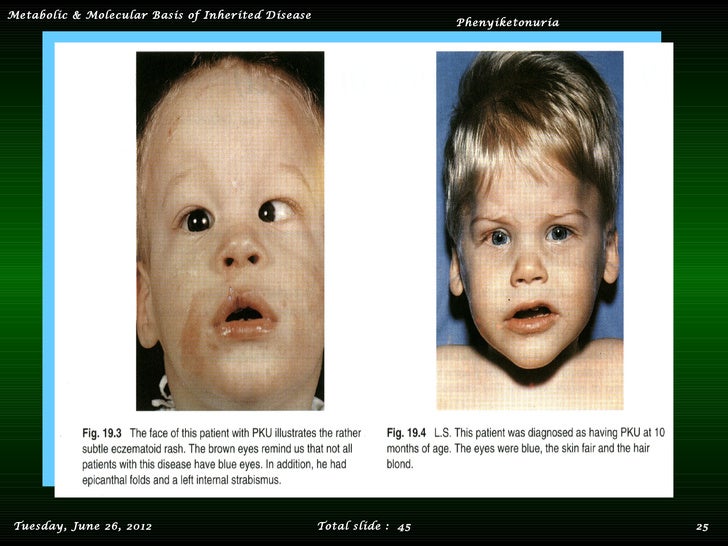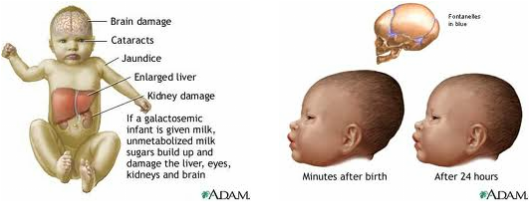phenylketonuria disease Phenylketonuria (pku disease)
Phenylketonuria (PKU) is a genetic disorder that affects the way the body processes an amino acid called phenylalanine. It is a rare condition, occurring in approximately 1 in every 10,000 to 15,000 newborns in the United States. PKU can have serious consequences if left untreated, but with proper management, individuals with PKU can lead healthy and fulfilling lives.
Understanding PKU
 PKU is caused by a genetic mutation that results in the body not having enough of an enzyme called phenylalanine hydroxylase (PAH). As a result, phenylalanine builds up in the body and can cause damage to the central nervous system. This accumulation of phenylalanine can lead to intellectual disability, seizures, behavioral problems, and other neurological issues.
PKU is caused by a genetic mutation that results in the body not having enough of an enzyme called phenylalanine hydroxylase (PAH). As a result, phenylalanine builds up in the body and can cause damage to the central nervous system. This accumulation of phenylalanine can lead to intellectual disability, seizures, behavioral problems, and other neurological issues.
Symptoms and Diagnosis
The symptoms of PKU can vary from mild to severe. In some cases, symptoms may not become apparent until later in childhood. Common symptoms include developmental delays, intellectual disability, behavioral problems, and skin rashes. If left undiagnosed and untreated, PKU can lead to severe brain damage.
 PKU is typically diagnosed through newborn screening tests, which are done shortly after birth. These tests measure the levels of phenylalanine in the blood. If elevated levels are found, further testing is done to confirm the diagnosis. Early diagnosis is crucial, as it allows for prompt intervention and management of the condition.
PKU is typically diagnosed through newborn screening tests, which are done shortly after birth. These tests measure the levels of phenylalanine in the blood. If elevated levels are found, further testing is done to confirm the diagnosis. Early diagnosis is crucial, as it allows for prompt intervention and management of the condition.
Managing PKU
There is currently no cure for PKU, but it can be effectively managed through dietary modifications. The main goal of treatment is to keep phenylalanine levels in the blood within a safe range. This is usually achieved by following a strict low-protein diet that limits the intake of phenylalanine. Special PKU formulas and medical foods are often necessary to ensure adequate nutrition while minimizing phenylalanine intake.
Individuals with PKU also need to be diligent about monitoring their phenylalanine levels regularly. This is typically done through routine blood tests. Adjustments may be made to the diet and treatment plan as needed to maintain optimal phenylalanine levels.
Living with PKU
Managing PKU can be challenging, as it requires lifelong commitment and discipline. However, with proper treatment and support, individuals with PKU can live healthy and fulfilling lives. It is important to work closely with a healthcare team that specializes in PKU management to ensure the best possible outcomes. Additionally, connecting with support groups and others who have experience with PKU can provide valuable emotional support and practical tips.
In conclusion, PKU is a genetic disorder that affects how the body processes phenylalanine. Early diagnosis and effective management are essential in preventing serious complications. By following a low-protein diet and regularly monitoring phenylalanine levels, individuals with PKU can lead healthy and fulfilling lives. It’s important to seek guidance from healthcare professionals and connect with support networks to navigate the challenges associated with living with PKU.
If you are looking for Phenylketonuria you’ve came to the right place. We have 5 Pics about Phenylketonuria like Biochemistry - Tommy the doc, Phenylketonuria - Home and also Phenylketonuria (PKU Disease) | Health And Beauty. Here you go:
Phenylketonuria
 www.slideshare.netphenylketonuria
www.slideshare.netphenylketonuria
Phenylketonuria - Home
 jsandovalphenylketonuria.weebly.comphenylketonuria children test normal arms legs jerking movements symtoms seizures having
jsandovalphenylketonuria.weebly.comphenylketonuria children test normal arms legs jerking movements symtoms seizures having
Biochemistry - Tommy The Doc
 tommythedoc.weebly.comphenylketonuria odor musty essential body
tommythedoc.weebly.comphenylketonuria odor musty essential body
PKU (Phenylketonuria) Genetics Causes Symptoms Diagnosis Treatment
 www.youtube.compku phenylketonuria symptoms causes genetics nclex diagnosis treatment usmle pathology
www.youtube.compku phenylketonuria symptoms causes genetics nclex diagnosis treatment usmle pathology
Phenylketonuria (PKU Disease) | Health And Beauty
 mytips10.blogspot.compku phenylketonuria disease treatment treated
mytips10.blogspot.compku phenylketonuria disease treatment treated
Phenylketonuria (pku disease). Phenylketonuria children test normal arms legs jerking movements symtoms seizures having. Phenylketonuria odor musty essential body